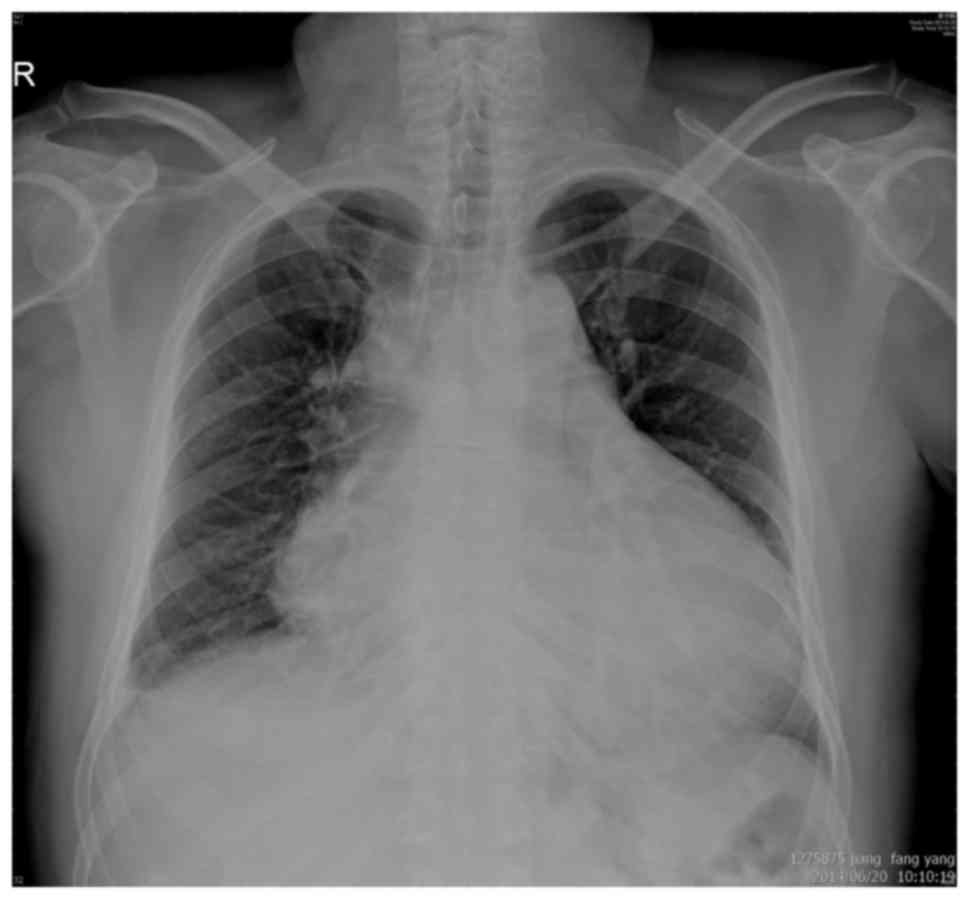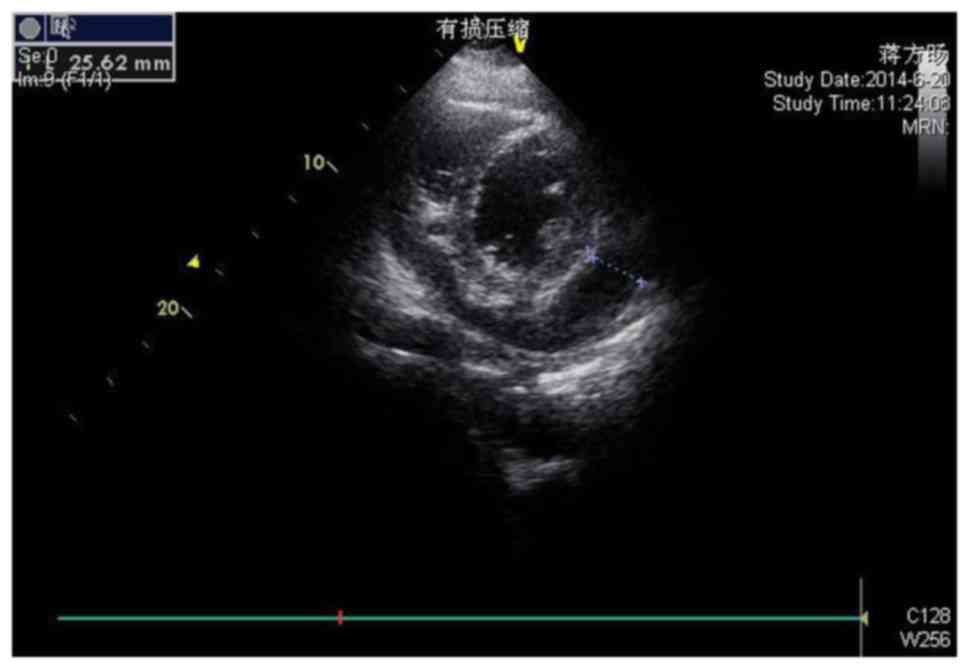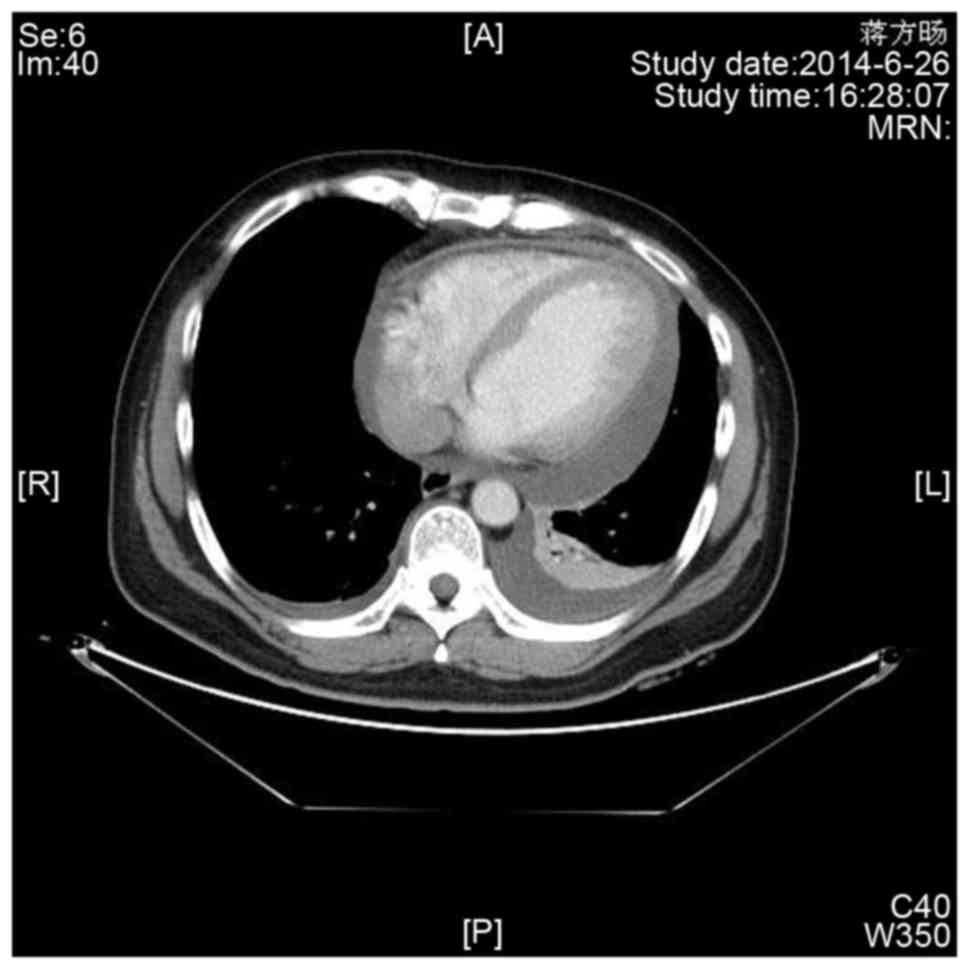Hemorrhagic pleural effusion related to acquired coagulation factor VIII deficiency: A case report
- Authors:
- Yu‑Ping Liu
- Xiang‑Hua Lin
- Xue‑Ke Wang
- Shang‑Zhi Yang
- Chang‑Qing Fan
View Affiliations
Affiliations: Department of Endocrinology and Metabolism, Xiamen Chang Gung Hospital, Xiamen, Fujian 361000, P.R. China, Department of Hematology, Xiamen Chang Gung Hospital, Xiamen, Fujian 361000, P.R. China, Department of Urology, Xiamen Chang Gung Hospital, Xiamen, Fujian 361000, P.R. China, Department of Radiotherapy, Xiamen Chang Gung Hospital, Xiamen, Fujian 361000, P.R. China, Department of Cardiology, Xiamen Chang Gung Hospital, Xiamen, Fujian 361000, P.R. China
- Published online on: October 18, 2017 https://doi.org/10.3892/etm.2017.5339
-
Pages:
6084-6086
Metrics: Total
Views: 0 (Spandidos Publications: | PMC Statistics: )
Metrics: Total PDF Downloads: 0 (Spandidos Publications: | PMC Statistics: )
This article is mentioned in:
Abstract
A patient with acquired hemophilia A (AHA) with hemorrhagic pericardial effusions was admitted to Xiamen Chang Gung Hospital (Xiamen, China) in August 2015. The patient had been experiencing progressive dyspnea for 1 week. Bloody effusion (~6.3 l) was drained from the membrane surrounding the heart over a period of 20 days. Biochemical, cytological and radiological examinations were unable to elucidate the reason for the effusion. Coincidentally, it was discovered that activated partial thromboplastin time prolongation could not be corrected by plasma mixing. Furthermore, immunologic and functional assays identified that the patient had factor VIII‑deficient plasma. Finally, the coagulopathy was treated by infusion of cryoagglutinin and steroids to eradicate the coagulation inhibitor. The production of cardiac bloody effusions did not recur. Notably, the patient was diagnosed with AHA accompanied by the rare complication of pericardial effusions. The present case was the first to report AHA with the complication of pericardial effusions.
View References
|
1
|
Higasa S: Diagnosis and treatment of
congenital and acquired hemophilia. Rinsho Ketsueki. 58:857–865.
2017.PubMed/NCBI
|
|
2
|
Collins PW and Percy CL: Advances in the
understanding of acquired haemophilia A: Implications for clinical
practice. Br J Haematol. 148:183–194. 2010. View Article : Google Scholar : PubMed/NCBI
|
|
3
|
Atar S, Chiu J, Forrester JS and Siegel
RJ: Bloody pericardial effusions in patients with cardiac
tamponade: Is the cause cancerous, tuberculosis, or iatrogenic in
the 1990s? Chest. 116:1564–1569. 1999. View Article : Google Scholar : PubMed/NCBI
|
|
4
|
Ma AD and Carrizosa D: Acquired factor
VIII inhibitors: Pathophysiology and treatment. Hematology Am Soc
Hematol Educ Program. 432–437. 2006.PubMed/NCBI
|
|
5
|
Fay PJ: Factor VIII structure and
function. Int J Hematol. 83:103–108. 2006. View Article : Google Scholar : PubMed/NCBI
|
|
6
|
Huth-Kühne A, Baudo F, Collins P,
Ingerslev J, Kessler CM, Lévesque H, Castellano ME, Shima M and
St-Louis J: International recommendations on the diagnosis and
treatment of patients with acquired hemophilia A. Haematologica.
94:566–575. 2009. View Article : Google Scholar : PubMed/NCBI
|
|
7
|
Matino D, Makris M, Dwan K, D'Amico R and
Iorio A: Recombinant factor VIIa concentrate versus plasma-derived
concentrates for treating acute bleeding episodes in people with
haemophilia and inhibitors. Cochrane Database Syst Rev: CD004449.
2015. View Article : Google Scholar
|












